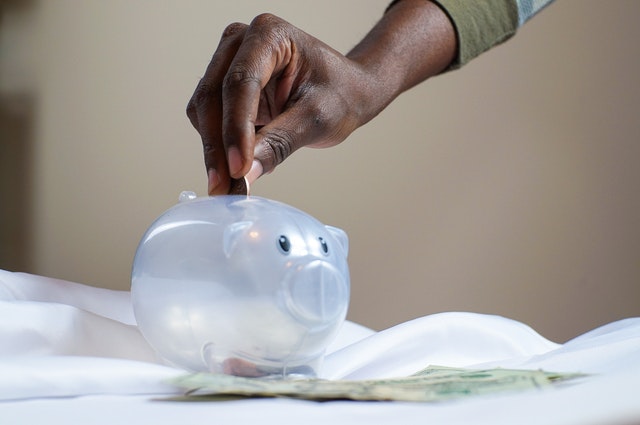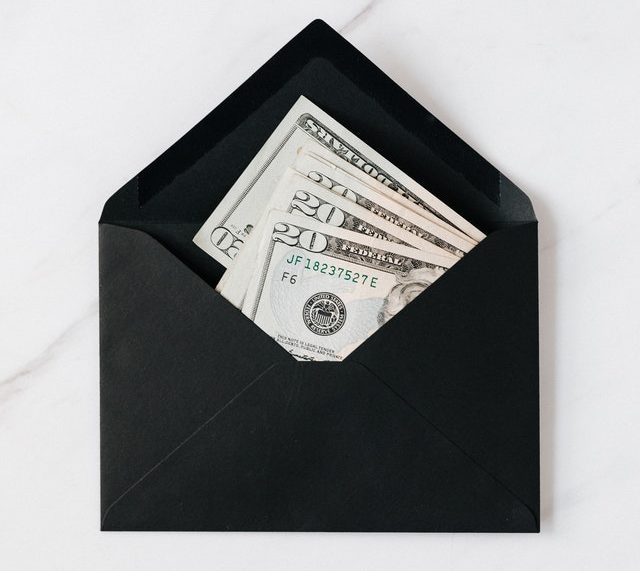How to Save Money and See Results!

The three initial steps to getting your money in order, in my opinion, are saving, debt management, and investing. And in that order. That does not mean you can only do one at a time but your focus shouldn’t be on investing if you don’t have any savings. Why is saving money so important? Where should you keep said money? How much do you need to be saved?
Why Saving Money is Important
Saving money is SO important to have some financial stability. If you have to rely on credit cards or loans to cover your daily needs, you will always be in a cycle of owing people money. When you are handing money over to creditors, that is money that will never work for you. So if you are in the mindset that debt is normal, I encourage you to challenge that mindset. Money doesn’t solve all problems but having some in the bank in case you need it can help you feel safer. Financial insecurity does not have to be forever.
READ MORE: 3 Steps to Deciding How Much of Your Paycheck to Save
READ MORE: How to recession-proof your life in 6 steps
Does it Matter Where You Save Your Money?
Big time! There are a few different options. You want to consider some factors. Is your money safe? Is it building interest? How accessible do you need or want it to be? Some people need their money saved to be out of sight so they don’t spend it. While others would like a debit card so that they have access to cash when they need it. Is the bank FDIC insured? This means the government backs up the bank, usually up to $250,000 for each account, if the bank goes under. So you don’t lose your money. Are there fees involved? You can find many accounts that are completely free to open and maintain.
READ MORE: Nix Fees and Never Get Charged by the Bank Again?
Where can you save your money?

Photo by Joslyn Pickens from Pexels
You can save it in cash at home, under your mattress, or in a safe. While this seemingly works for some people, this isn’t a very good plan. You see, money loses value over time. This is called inflation, which is usually around 2% a year. So keeping it somewhere where it won’t increase in value means, in a way, you are losing money. Also, your money can more easily get lost, damaged, or stolen when you keep it at home.
Most people keep their money in a savings account. However, there are options here too. Savings accounts at your traditional bank are usually one’s first experience with a savings account. When you sign up for your first checking account at a local bank, you’re often offered to open a savings account as well. It is very convenient and doesn’t take much thought. The issue? Money saved in this account usually grows at an interest rate of close to 0%. Once again, you are not beating inflation. But your money is relatively easy to access.
Yet another option is a high-yield savings account. A high-yield savings account is typically a bank-based online that provides higher than average interest rates. They can afford to pay you more interest because they do not have to pay the overhead costs that a bank in a building has to pay. If you look now, these interest rates are not super impressive. When the government decreased the federal interest level, it also decreased interest everywhere else. However, the interest you will get in a high-yield savings account will still beat most traditional banks.
Certificates of deposit (CDs) are a great vehicle for saving money that you especially do not want to be touched for a period of time. When you enroll in a CD, you are putting in a set amount of money for a set period of time. This amount of time could be either a few months or a few years. For the most part, the longer the term of the CD, the more interest you’ll earn. If you try to access the money before the chosen timeframe, then you will be charged a fee. So you have to give thought to when you might need this money. Then, if you decide a CD is appropriate for you, choose a timeframe that fits within your goals.
When choosing an account, I like to check out sites like Nerdwallet and Bankrate for recommendations.
How much Money Should You Save?

Photo by Karolina Grabowska from Pexels
Well, that depends on you and your financial goals. When deciding how much you want to be saved, try to be intentional. Don’t settle on an arbitrary number just because the number sounds good. Set goals for the accounts you want to open. What are they for? Is it an emergency fund or a sinking fund? An emergency fund is an account where you have money saved for an unexpected event. Perhaps you lost your job or got hit with an unexpected expense (car breaks down, medical bill). This is important! Think about this. If you never save money but instead choose to pay off your high-interest credit cards, what happens when an emergency occurs? You will likely have to take on more debt in order to cover that. Hence, the cycle referred to earlier.
READ MORE: How Much Do You Need in an Emergency Fund?
A sinking fund is an account where you have money saved to spend. Is there a vacation you’re looking to take? Is there a gift you want to buy? You can open an account for each goal if you’d like. Some banks will allow you to have different “envelopes” within each account. That way, you can keep the money separate for each goal without having so many different accounts. I have an account that pays for the costs related to my home, another for vacations, and yet another for when I just want to get myself something I want.
READ MORE: How Many Bank Accounts Could You Possibly Need?
Your Other Financial Goals
If you have debt or want to invest, you might be wondering where in your financial journey you should start working on these goals. While I believe you should have $1000 in a savings account (preferably a high-yield one) prior to considering other goals, if you look at your situation closely, that number could be higher. If you have kids who might get hurt playing or a health condition that can take a sudden turn, $1000 could sound like pennies. Take a look at your life and determine what is the minimum number you would feel comfortable with having if something unexpected occurred. This number should not be equal to your emergency fund.
Once you reach that number, let’s say $1,000, then you can start diversifying where your money is going. Some money should go into continuing to grow your emergency fund. The rest should go towards debt repayment. If you can spare a little bit of money at this stage, try to invest. Nowadays, you can invest with as little or as much money as you can afford.
READ MORE: Why Invest in the Stock Market Today?
Where Am I Even Going to Find the Money to Save?
If the amount of money you’re making is less than the amount of money you’re spending, you’ll be asking yourself that very question. However, there are options. First and foremost, decrease your expenses where you can. If you are not the type to track how you are spending your money, you are likely to find quite a few surprises in your statements. You will likely find a few things you can tweak or completely eliminate in order to give you more breathing room. Check out some of the articles linked below or search for more articles categorized under savings.
READ MORE: Cancel Some Subscriptions, Save on Car Insurance, Save on Groceries, Save Money on Pet Care, Save Money on Utilities
Second, find ways to make more money. The internet has made it increasingly easy to make extra money. You can use the internet to find jobs or work from home. There are platforms and/or apps where you can sign up to provide services to people, like Uber or TaskRabbit. Consider what you are already good at and lean into those skills.
Now it’s your turn. Do you consider yourself a good saver? What challenges do you face or have faced when saving money? Share in the comments below.

The Best Way to Successfully Build An Emergency Fund —
[…] start, you need to save. In a savings account. A separate high-interest savings account. Separate from all your other […]